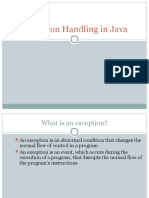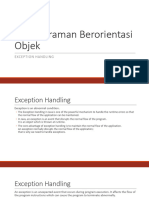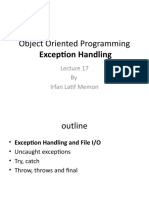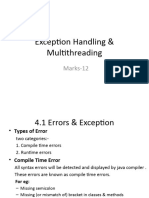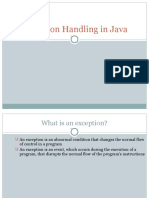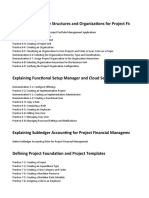0% found this document useful (0 votes)
7 views32 pagesLesson 08 Exception Handling
This lesson covers exception handling in Java, including types of exceptions (checked and unchecked), the use of try-catch blocks, and the advantages of exception handling. It also explains the throws and throw keywords, the finally block, and common exception classes like NullPointerException and ArrayIndexOutOfBoundsException. Key takeaways emphasize the importance of managing exceptions to maintain program flow and error handling.
Uploaded by
pradeep191988Copyright
© © All Rights Reserved
We take content rights seriously. If you suspect this is your content, claim it here.
Available Formats
Download as PDF, TXT or read online on Scribd
0% found this document useful (0 votes)
7 views32 pagesLesson 08 Exception Handling
This lesson covers exception handling in Java, including types of exceptions (checked and unchecked), the use of try-catch blocks, and the advantages of exception handling. It also explains the throws and throw keywords, the finally block, and common exception classes like NullPointerException and ArrayIndexOutOfBoundsException. Key takeaways emphasize the importance of managing exceptions to maintain program flow and error handling.
Uploaded by
pradeep191988Copyright
© © All Rights Reserved
We take content rights seriously. If you suspect this is your content, claim it here.
Available Formats
Download as PDF, TXT or read online on Scribd
/ 32


























